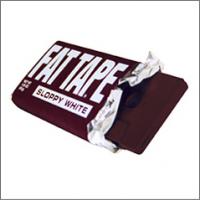Anyone got their turntable pitch recalibrated?
 sloppywhite
230 Posts
sloppywhite
230 Posts
What's a normal charge for something like this (first time i've ever needed it)? I was quoted $60.Any "do-it-yourselfer's" out there? Is it hard?

Comments
thanks dude!
any help would be mucho obliged...
I see that you're in Chicago -- just curious, who quoted $60?
i called saturday audio exchange first, but they were backed up and recommended midwest audio on diversey and clark (the $60 quote).
hi tony... thanks for the tip, man. is their turnaround time good?
MIKE!!!
dude, when do we get laced with that Rub set you did?
matamatic, i'd totally give it a shot if i had some link action to a step by step guide (if one exists).
and here's the text:
I highly recommend checking to see if you have two zero points as this guy says. One of mine had two zeros and would throw my mixes off from time to time.
My homie tuned mine up about a year ago--I just sat and watched him do it, and it's pretty much as matamatic said. You just take off the platter and that cover and then turn the screw (you don't have to turn it much, as I recall--just a little tweak does a lot to the platter speed...and I forget if turning the screw clockwise speeds up or slows down the platter, but it's not hard to figure that out once oyu're in there). But like you, I'm pretty nervous about doing such a thing unsupervised because I have an uncanny ability to make "simple" repair jobs like this turn into gigantic catastrofucks.
thanks, man!!!
i'm gonna see if i can do it tomorrow night when i have more time to spend with it.
although i may chicken out...
it's not so bad. I was a bit timid the first time I opened my TT up, but it's really not difficult. Just requires some patience. It's one of those things that when you're done you're like "that was it?"
More than likely, you can get away with just doin the top adjustment by pulling the platter off, unscrewing the five screws holding the plastic in, and adjusting the "pitch" pot screw. I find it easiest to leave the plastic out, adjust just a little bit at a time, and putting the platter back on sans plastic. Then you can adjust through the hole in the platter until everything is perfect, before puttin the plastic back in. While you're in there, adjust the brakes w/ the "brake" pot screw so they match too, (use a record and adjust by ear for the sound on the same down-beat). I like my brakes a bit on the slow side, but you can make that thing brake so hard that it backspins. It's pretty uncomplicated as far as technics repairs go, the tonearms and pop up lights are the real bitches.
Oh yeah: anyone in San Diego needs work on their turntables or mixers: holler on the PM.
where do you work at?
Actually, I just do it independently-- cash only (hello IRS!!). But, if you're nervous about someone hacking up your turntables, I can give you reputable references of people whom have had me work on their setups (including bars/clubs/etc.).
Can you do something about the mixer at Landlord Jim's. That thing sucks.
Supposedly, the mixer in there is "borrowed", so they don't want to put any money into it. Yeah, that fader is jacked. I have their "real" mixer sitting in my apartment. I guess S***h was saying that the line switch was bad, but I've tested them and they are both fine.
Honestly, they probably shouldn't be running a setup like that off of an 05 Pro. Those things just peak so fast, it's not good considering the scumbag dj's that don't watch their levels they get rollin through there (har har). I've called S***h a couple times and left messages, trying to figure out who complained about the mixer in the first place, but I haven't heard anything yet.